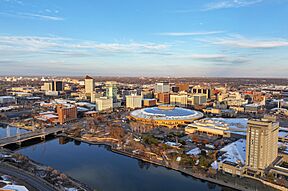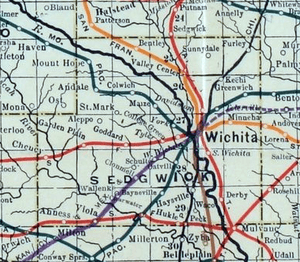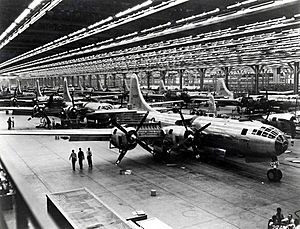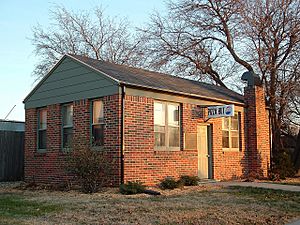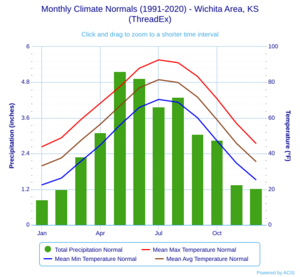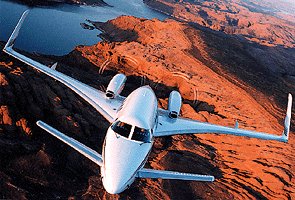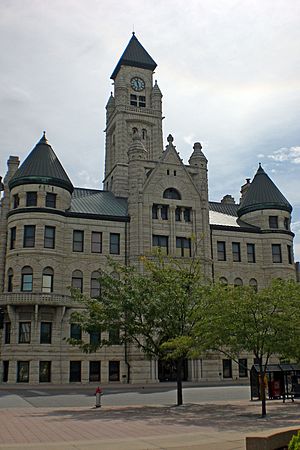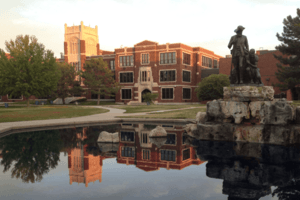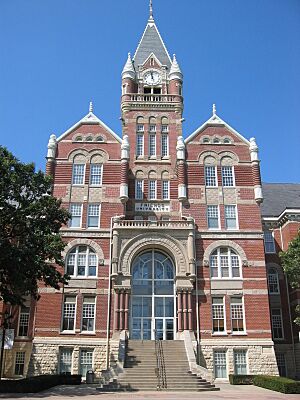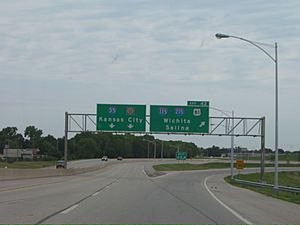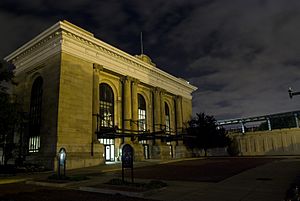Wichita, Kansas facts for kids
Quick facts for kids
Wichita, Kansas
|
|||||
|---|---|---|---|---|---|
|
City and county seat
|
|||||
|
|
|||||
|
|||||
| Nickname(s):
Air Capital of the World, ICT
|
|||||
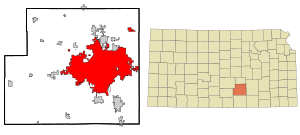
Location within Sedgwick County and Kansas
|
|||||
| Country | United States | ||||
| State | Kansas | ||||
| County | Sedgwick | ||||
| Founded | 1868 | ||||
| Incorporated | 1870 | ||||
| Named for | Wichita people | ||||
| Government | |||||
| • Type | Council–manager | ||||
| Area | |||||
| • City and county seat | 166.52 sq mi (431.28 km2) | ||||
| • Land | 161.99 sq mi (419.55 km2) | ||||
| • Water | 4.53 sq mi (11.73 km2) | ||||
| Elevation | 1,303 ft (397 m) | ||||
| Population
(2020)
|
|||||
| • City and county seat | 397,532 | ||||
| • Estimate
(2023)
|
396,119 | ||||
| • Rank | 51st in the United States 1st in Kansas |
||||
| • Density | 2,454.05/sq mi (947.52/km2) | ||||
| • Urban | 500,231 (US: 84th) | ||||
| • Urban density | 2,205.2/sq mi (851.4/km2) | ||||
| • Metro | 647,919 (US: 93rd) | ||||
| Demonym(s) | Wichitan | ||||
| Time zone | UTC−6 (CST) | ||||
| • Summer (DST) | UTC−5 (CDT) | ||||
| ZIP Codes |
67201–67221, 67223, 67226–67228, 67230, 67232, 67235, 67260, 67275–67278
|
||||
| Area code | 316 | ||||
| FIPS code | 20-79000 | ||||
| GNIS ID | 473862 | ||||
Wichita is the largest city in Kansas, a state in the United States. It is also the main city of Sedgwick County. In 2020, about 397,532 people lived here. The larger Wichita area, including nearby towns, had about 647,610 people. Wichita is located in south-central Kansas, right on the Arkansas River.
Wichita started as a trading post in the 1860s. It was officially made a city in 1870. It became a popular stop for cattle drives coming from Texas. This is how it got the nickname "Cowtown." Later, in the 1920s and 1930s, Wichita became famous for building airplanes. Companies like Beechcraft and Cessna started here. Because of this, Wichita is known as "The Air Capital of the World." Today, it's still a major center for the aircraft industry.
Wichita is also a hub for culture, media, and trade. It has several universities, museums, theaters, and parks. Important places include Intrust Bank Arena and Century II Performing Arts & Convention Center. The Old Cowtown Museum shows what the city was like in its early days. Wichita State University is one of the biggest schools in Kansas.
Contents
History of Wichita
Wichita has a long and interesting history. People have lived near the Arkansas River for thousands of years. In 1541, a Spanish explorer named Francisco Vázquez de Coronado found the Wichita tribe living here.
How Wichita Began
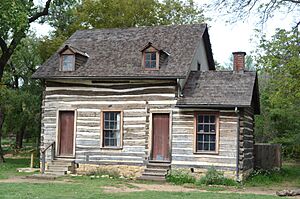
The land where Wichita now stands was once claimed by France. The United States bought it in 1803 as part of the Louisiana Purchase. In 1863, the Wichita people returned to the area. They had been forced from their homes during the American Civil War.
A trader named Jesse Chisholm set up a trading post here. This post was one of many along a path that went south to Texas. This path became known as the Chisholm Trail. In 1868, a group of investors started the Wichita Town Company. They named the new settlement after the Wichita tribe. The city was officially formed on July 21, 1870.
The "Cowtown" Era
Wichita's location on the Chisholm Trail made it a key spot. Cattle drives from Texas would end here. The cattle were then loaded onto trains to be sent to markets in eastern cities. This is why Wichita earned the nickname "Cowtown." The Atchison, Topeka and Santa Fe Railway arrived in 1872.
During the late 1880s, many people moved to Wichita. This led to a land boom, and the city grew quickly. Wichita State University started as Fairmount College in 1886. Friends University opened in 1887. By 1890, Wichita was the third-largest city in Kansas.
Oil and Airplanes
In 1914 and 1915, oil and natural gas were found nearby. This brought another boom to Wichita. Many oil companies set up their businesses here. The money from oil helped people invest in a new industry: airplane manufacturing.
In 1917, Clyde Cessna built the first airplane in Wichita. Soon, other companies like Swallow Airplane Company, Stearman Aircraft, and Beechcraft started. By 1929, Wichita was called the "Air Capital of the World."
Aviation continued to help the city grow. In 1934, Stearman's facilities became part of Boeing. Boeing became the city's biggest employer. During World War II, Wichita made many B-29 bombers. The city's population grew from 110,000 to 184,000 during the war.
Many other famous businesses started in Wichita. These include Mentholatum (1889) and Coleman (early 1900s). Fast-food chains like White Castle (1921) and Pizza Hut (1958) also began here.
Wichita in the 21st Century
Wichita has kept growing into the 21st century. The city has worked to improve its downtown area. Intrust Bank Arena opened in 2010.
Even though Boeing closed its Wichita operations in 2014, the city is still a major center for aircraft manufacturing. Companies like Spirit AeroSystems and Airbus still have facilities here. In 2015, Wichita Mid-Continent Airport was renamed Wichita Dwight D. Eisenhower National Airport. This honored the Kansas-born U.S. President.
Geography and Climate
Wichita is in south-central Kansas. It sits where Interstate 35 and U.S. Route 54 meet. It is about 157 miles north of Oklahoma City. The city is on the Arkansas River, near the Flint Hills.
The Arkansas River flows through Wichita, dividing the city. Several smaller rivers and creeks join the Arkansas River here. These include the Little Arkansas River and Chisholm Creek. The city covers about 163.59 square miles of land and water.
Wichita is surrounded by many smaller towns. These include Valley Center, Park City, and Bel Aire to the north. Eastborough is inside Wichita. Andover is to the east. Derby and Haysville are to the south.
Wichita's Weather
Wichita has hot, humid summers and cold, dry winters. Because it's on the Great Plains, far from oceans or mountains, it often has severe weather. Thunderstorms are common in spring and summer. These can sometimes bring large hail and lightning.
Winters are cold and dry. Temperatures can vary a lot, from warm air coming from the Gulf of Mexico to very cold air from the Arctic. The wind in Wichita averages 13 miles per hour. January is usually the coldest and driest month. July is the hottest, and May is the wettest.
The average temperature in Wichita is 57.7°F. High temperatures reach 90°F about 65 days a year. They reach 100°F about 12 days a year. The lowest temperatures can drop to 10°F about 7.7 days a year. Wichita gets about 34.31 inches of rain each year. Most of this rain falls in the warmer months. The city also gets about 12.7 inches of snow annually.
Allergies in Wichita
Wichita is often ranked as one of the worst cities for seasonal allergies. This is mainly due to pollen from trees and grass. Smoke from farmers burning fields also adds to the problem. Strong Kansas winds spread these allergens around. The Asthma and Allergy Foundation of America has ranked Wichita as one of the worst cities for allergies multiple times.
Wichita Neighborhoods
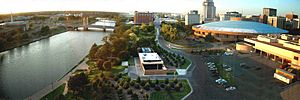
Wichita has many different areas and neighborhoods. The downtown area is east of the Arkansas River. It includes places like Century II and the Epic Center. Old Town is also downtown. This area has nightclubs, restaurants, shops, and apartments in old warehouse buildings.
Two well-known living areas are Riverside and College Hill. Riverside is across the Arkansas River from downtown. College Hill is east of downtown. It is one of the older neighborhoods, along with Delano and Midtown.
During World War II, several temporary housing areas were built in southeast Wichita. These were for workers at aircraft plants like Boeing and Cessna. These areas, like Oaklawn and Planeview, were meant to be temporary. But they are still lived in today, often by low-income families.
People of Wichita
Wichita is the largest city in Kansas. It is the 51st largest city in the United States. The city has a long history of welcoming people from other countries.
Starting in 1895, many Lebanese Americans moved to Wichita. Later, more Lebanese people came to escape war in their home country. After the Vietnam War, thousands of immigrants from Vietnam also moved to Wichita.
In 2020, Wichita had 397,532 people. There were 154,683 households. The population density was about 2,454 people per square mile.
The city's population is diverse. About 58.8% of people were White (not Hispanic). About 10.6% were Black or African American. About 5% were Asian. About 18.3% of the population was Hispanic or Latino.
The average household size was 2.5 people. About 24.6% of the population was under 18 years old. The median age in the city was 35.3 years.
Wichita's Economy
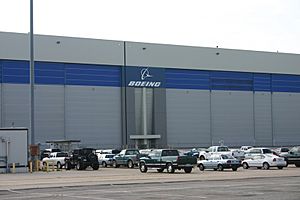
Wichita is known as the birthplace of famous restaurants like White Castle and Pizza Hut. Many well-known Kansas brands are based here. These include Koch, Coleman, Cessna, and Beechcraft.
The main industry in Wichita is manufacturing. This includes making airplanes. Aircraft manufacturing has always been very important to Wichita's economy. The state even offers special benefits to aircraft makers.
Healthcare is Wichita's second-largest industry. It employs about 28,000 people. This field is stable because people always need healthcare. New hospitals and medical centers have opened in Wichita, like the Kansas Spine Hospital and Wesley Children's Hospital.
Wichita also became a major oil town after oil was found nearby. Companies like Koch Industries started here.
The cost of living in Wichita is lower than the national average. This means it's generally cheaper to live here than in many other U.S. cities.
Airplane Manufacturing in Wichita
Wichita is famous for building airplanes. Pioneers like Clyde Cessna and Walter Beech started their companies here. These companies helped Wichita become the top city in the nation for aircraft production. In 1929, it was officially named the "Air Capital City."
Companies like Cessna, Beechcraft, and Learjet are still based in Wichita. They are now part of Textron Aviation. Spirit AeroSystems and Airbus also have facilities here. More than 50 other aviation businesses work in the Wichita area. Since 1916, Wichita companies have built an estimated 250,000 aircraft.
After the September 11, 2001, attacks, the aviation industry faced challenges. But companies in Wichita started making smaller airplanes for businesses. In 2012, Boeing announced it would close its Wichita plant. However, Spirit AeroSystems took over the factory and continued making aircraft parts for Boeing.
Arts and Culture
Wichita has many places for art and performances. The Wichita Art Museum is the largest art museum in Kansas. It has 7,000 works of art. The Ulrich Museum of Art at Wichita State University shows modern art.
Music and Shows
Wichita is a music center for central Kansas. Many famous musicians perform here. Music Theatre Wichita, Wichita Grand Opera, and the Wichita Symphony Orchestra perform at the Century II Convention Hall. The Orpheum Theatre, a historic movie palace, hosts smaller shows. The Cotillion is another popular music venue.
Fun Events
The Wichita River Festival is a big event held every year since 1972. It has music, sports, cultural activities, plays, and fireworks. Over 370,000 people attend each year. Wichita also has parades for the River Festival, Christmas, Veterans Day, Juneteenth, and St. Patrick's Day.
The Wichita Black Arts Festival celebrates African-American art and creativity. The Wichita Asian Festival showcases Asian arts, crafts, and food. Wichita State University also hosts an international cultural festival.
The Tallgrass Film Festival happens every October. It shows independent films from around the world. Aviation events like air shows are also common in Wichita. Car shows, including the Blacktop Nationals, are popular too.
Places to Visit
There are many interesting places to visit in Wichita. Along the Arkansas River, you can find the Exploration Place science center. There's also the Mid-America All-Indian Center and the Old Cowtown Museum. The The Keeper of the Plains statue is a famous landmark.
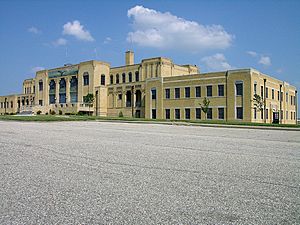
The Wichita-Sedgwick County Historical Museum is in the old city hall building. The Museum of World Treasures and the Great Plains Transportation Museum are also downtown. The Kansas Aviation Museum is in the old Municipal Airport building. The Original Pizza Hut Museum is on the Wichita State University campus.
The Sedgwick County Zoo is a very popular attraction. It has over 2,500 animals. Intrust Bank Arena is the city's main event venue. It can hold over 15,000 people.
Old Town is Wichita's entertainment district. It used to be a warehouse area but is now full of nightclubs, restaurants, and hotels. Wichita also has several shopping malls and outdoor shopping centers.
The Wichita Public Library has a main building and six branches. It offers many free programs and has over 1.3 million books.
Sports in Wichita

Wichita has several sports teams. The Wichita Thunder is an ice hockey team. The Wichita Force is an indoor football team. The Wichita Wind Surge is a Minor League Baseball team that plays at Riverfront Stadium. Wichita also hosts the Air Capital Classic, a professional golf tournament.
Many college teams play in Wichita. The Wichita State University Shockers are NCAA Division I teams. The Newman University Jets are NCAA Division II teams. The Friends University Falcons play in the NAIA.
Sports Venues
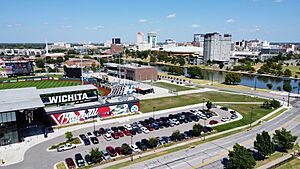
Intrust Bank Arena is a large arena downtown. It is home to the Wichita Thunder. Lawrence–Dumont Stadium used to host minor-league baseball.
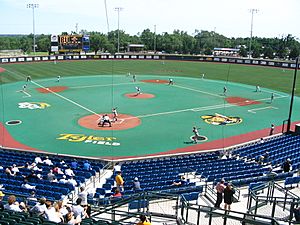
At Wichita State University, there's Eck Stadium for baseball and Charles Koch Arena for basketball. Koch Arena also hosts high school sports and concerts. North of the city is 81 Motor Speedway for car races. Hartman Arena in Park City hosts rodeos and other events.
Wichita also has two sports museums: the Kansas Sports Hall of Fame and the Wichita Sports Hall of Fame and Museum.
Professional Sports Teams
| Team | Founded | League | Sport |
|---|---|---|---|
| Wichita Thunder | 1992 | ECHL | Ice hockey |
| Wichita Wind Surge | 2020 | Double-A Central | Baseball |
| Wichita Wings | 2019 | MASL 2 | Indoor soccer |
College Sports Teams
| School | School nickname |
Level | # of teams |
|---|---|---|---|
| Wichita State University | Shockers | NCAA Division I | 15 |
| Newman University | Jets | NCAA Division II | 16 |
| Friends University | Falcons | NAIA | 15 |
Education in Wichita
Wichita has many schools for all ages. Wichita USD 259 is the largest school district in Kansas. It has over 50,000 students. The district runs more than 90 schools, including 12 high schools and 16 middle schools.
There are also over 35 private schools in Wichita. The Roman Catholic Diocese of Wichita oversees 16 Catholic schools. Other Christian schools and an Islamic school are also in the city.
Colleges and Universities
Wichita is home to several colleges and universities.
- Wichita State University (WSU) is a large public research university. It has over 14,000 students.
- Friends University is a private Christian university.
- Newman University is a private Catholic university.
The University of Kansas School of Medicine also has a campus in Wichita. Other colleges have satellite locations here, too.
Media and News
The Wichita Eagle is the city's main daily newspaper. It started in 1872. The Wichita Business Journal is a weekly newspaper about local businesses. Other newspapers and magazines cover different topics, like the African American community, the Hispanic community, and local fashion.
Wichita has many radio stations. Six AM stations and more than a dozen FM stations broadcast from the city. Wichita is also a major television market. All the main TV networks, like ABC, CBS, FOX, and NBC, have affiliates here.
Movies Filmed in Wichita
Some movies have scenes filmed in Wichita. These include The Attic (1980), Mars Attacks!, and Twister.
City Infrastructure
Flood Control
Wichita has had many floods from the Arkansas River. To prevent future floods, the Wichita-Valley Center Floodway was built. People call it the "Big Ditch." It was finished in 1958. This ditch moves part of the Arkansas River's water around west Wichita. Another flood control canal runs through the middle of the city. These systems help protect Wichita from flooding.
Transportation
Highways
Many major highways pass through Wichita. Interstate 35 (the Kansas Turnpike) runs along the city's southeastern edge. Interstate 135 goes north-south through the city. Interstate 235 is a bypass route that goes around the central parts of Wichita. U.S. Route 54 and U.S. Route 400 run together as Kellogg Avenue, which is a main east-west road.
Buses
Wichita Transit operates 53 buses on 18 routes within the city. They provide over 2 million rides each year. Greyhound Lines offers bus service to other cities like Topeka and Oklahoma City, Oklahoma.
Airports
Wichita has two main public airports. Wichita Dwight D. Eisenhower National Airport is the city's main airport and the largest in Kansas. Seven airlines offer flights from here. Colonel James Jabara Airport is for general aviation. There are also several smaller, privately owned airports.
Trains
Two large freight railroads, BNSF Railway and Union Pacific Railroad, have lines through Wichita. Wichita has not had passenger train service since 1979. The closest Amtrak station is in Newton, about 25 miles north.
Walking and Biking
Wichita is becoming more walkable. A study in 2014 ranked it 41st among the 50 largest U.S. cities for walkability. The city has also been working to improve its bicycle paths. By 2018, Wichita had 115 miles of bikeways.
Notable People from Wichita
Many famous people have come from Wichita, Kansas.
Sister Cities
Wichita has several sister cities around the world:
 Cancún, Quintana Roo, Mexico
Cancún, Quintana Roo, Mexico Kaifeng, Henan, China
Kaifeng, Henan, China Orléans, Loiret, France
Orléans, Loiret, France Tlalnepantla de Baz, State of Mexico, Mexico
Tlalnepantla de Baz, State of Mexico, Mexico
See also
 In Spanish: Wichita (Kansas) para niños
In Spanish: Wichita (Kansas) para niños


